The Budget Eastern Canada Travel Guide includes 18 Important Travel Planning Tips that will allow you to see and do more on your budget. Learn how you can benefit.
Welcome to the Eastern Canada Travel Guide! Anyone visiting this amazing country within a realistic timescale is going to face a simple choice. They could either cover the huge distances involved by using airlines to ‘hop’ between provinces or opt to focus on a more thorough exploration of specific regions. In this guide, we’ll take a look at how best to see Eastern Canada – encompassing the great cities of Toronto and Montreal and all the natural wonders that surround the two.
From epic national parks through to historic communities and the mightly Niagara Falls, visitors will never be short of ways to fill their days in the most amazing ways imaginable. We’ll also take a thorough look at how to manage those distances and timescales in the most effective ways possible – and don’t worry, it’s very difficult to take a wrong turn here!
Eastern Canada Travel Guide – What Are the Best Places to Visit in Eastern Canada?
Even when we’re just focusing on the Eastern parts of Canada it is important to understand that there is a staggering amount worth seeing spread over huge distances! You could quite happily spend weeks exploring these specific areas in detail, so for the sake of compactness, we’ll need to look at these in more macro terms.
Our advice for those lucky enough to enjoy four weeks or longer in Eastern Canada would be to split their itinerary between provinces while allowing for a degree of flexibility when options present themselves. Newfoundland and Labrador are very different from Nova Scotia, Quebec, Ontario and so on – take advantage of the fact that provinces have their own unique identity when deciding how to spend your time.
Toronto and the surrounding coastline is an amazing place to visit for those looking to begin their tour in a mostly urban environment. You’ll find world-class cultural attractions, shopping, nightlife, and so on presented with a distinctly Canadian sense of welcoming charm. Check out the famous CN Tour for those iconic vacation snaps, spend plenty of time taking in the Royal Ontario Museum, explore the somewhat out of place Casa Loma and be sure to hang out around the ever so cool Distillery District.
Within easy (in Canadian terms) reach of some majestic scenery including those iconic Niagara Falls, Toronto is a fantastic place to start before moving further east or north.
If Toronto is all big city vibes then chances are many visitors will appreciate the rather more distinctive charms of Quebec City. It really does feel like a small part of France (including scenery akin to what you’d find in Provence) has been transplanted into Canada – and makes for the perfect base to explore the Francophone parts of Eastern Canada. Enjoy the atmospheric Vieux-Québec district lined with cobblestoned streets and endless bistro serving up French classics alongside those bowls of poutine!
After you have explored the city (and it’s amazing galleries) spread your wings into the glorious natural surrounds. The Parc National de la Jacques-Cartier is handily close by, great for cycling enthusiasts, and packed with options to entice those tempted to try out some more adrenalin-packed adventure travel. Spread your wings further in Quebec to include the stunning Montmorency Falls – it’s a great choice for summertime camping.
Quebec City is the capital of Quebec but Montreal is substantially larger and more cosmopolitan. Alongside the procession of wonderful museums (the Science Center is worth a full day) and galleries, this city really is a delight to explore on foot or bike. All being told it is perhaps the best ‘base location’ for exploring Quebec in the summertime thanks to the wider variety of things to do and cheaper options for places to stay and dine.
Quebec City is indisputably amazing in winter but for summer activities and simply ease of getting to from international locations Montreal has plenty of pluses, especially for those on shorter stays.
Wonderful as the Eastern Canadian cities are, most visitors are going to be interested in seeing the natural wonders – and this is where some planning really comes into play. A fully inclusive road trip spanning all of the provinces and eastern seaboard will take somewhere between 4-6 weeks, and you’ll still be looking at having to shave some great sites off your ‘to-see’ list. In the opinion of the Eastern Canada Travel Guide, the areas around L’Anse aux Meadows is an essential inclusion.
It’s where most historians believe that Norse visitors first landed/settled in Canada around a thousand years ago – and conveniently they couldn’t have chosen a much more beautiful place to do so. Thousand Islands down towards the US border is a wonderful option for some lakeside lazing, while the Bay of Fundy over in New Brunswick is reliably gorgeous whatever the weather!
Back down towards the southern parts of Eastern Canada, you’ll likely want to include a stay in Kingston, Ontario for some colonial-era style. Those clapboard buildings certainly add some real character to the former (and briefly) Canadian capital city, and as ever make sure to head out to explore the surrounding countryside at every opportunity. It’s a gorgeous place – and the perfect place to visit before or after the essential trip to Niagara Falls.
Even Americans will concede the fact that arguably the most stunning waterfalls in the world – and certainly the most accessibly epic – are best from the Canadian side of the border. Make sure to spend some time within the city itself – once you get past the tourist-tat it’s a great place packed with lesser spotted attractions (and a killer nightlife!).
The Eastern Canada Travel Guide makes no excuses for barely mentioning huge swathes of the country during this quick overview of the most popular sites. You could quite simply spend weeks exploring each province in turn. Newfoundland offers an utterly different experience to what you’ll find deeper within the country – and if wild exploration is more your thing, you’ll be right at home here.
Halifax is also a great city with a fascinating historic story, and as you’d expect there’s countless smaller towns and cities each well worth staying for a night or two. How you choose to explore Canada is entirely up to you, but for those who love to see where the breeze takes them, be assured that you really can’t go wrong.
Now that you are reading the Western Canada Travel Guide, what’s next? Let’s learn more about other country trips.
Budget Central Canada Travel Guide – 8 Ways to Save Money
Budget England Travel Guide – 8 Ways to Save More Money
Budget France Travel Guide – 8 Ways to Save More Money
Budget Ireland Travel Guide – 8 Ways to Save More Money
Eastern Canada Travel Guide – What Are the Best Things to Do in Eastern Canada?
When it comes to iconic things to do in Eastern Canada you’ll simply be rather spoiled for choice. Eat a fresh lobster while camping out on Prince Edward Island, hike Quebec via the mightly Laurentian Mountains, go whale spotting off the Tadoussac coast, try and squeeze the Niagara Falls into just one photo frame – the list is endless!
The key to understanding here is that Eastern Canada offers a better variety compared to what you may expect to find in the Central and Western parts of the country. While you can’t readily hop from metropolitan city to the top of a mountain, you can certainly include both within any tour.
When you visit Eastern Canada will make a difference to your trip. Do not underestimate the seasonal variations in this country – and we’ll discuss these shortly in the Eastern Canada Travel Guide. For this reason and a few others, we’d really recommend that prospective visitors take the time to research what is going to interest them the most. Canada in the summertime is just as beautiful and magnificent as it is in the snowy winter – just rather different – and this will affect the style and nature of your trip.
As discussed during the introduction to this guide our advice would be to look at your timeframe and consider the logistics involved in properly exploring this enormous region. Many visitors – of all budgets – look to arrange their own transportation and not without good reason. While the rail network is better compared to south of the border, having your own set of wheels does offer a serious advantage.
An Eastern Canadian road trip – spending time in budget motels, camping, hiking, exploring things to do as you stumble across them – is one of those unforgettable travel opportunities. The real decision you’ll have to make is what order best suits your visit/timescale. We’d highly recommend starting in Toronto and then heading in a long round trip – with plenty of detours – before completing the circle and rounding off with Niagara Falls – but that’s just our preference!
If you do not have a month or longer spare then we’d suggest a more culturally themed trip. The differences between the English and French-speaking provinces are quite clear-cut and not only in terms of architecture and history. You’ll notice that the scenery also is quite distinctive between them. Perhaps look towards spending a good proportion of your time cycling/hiking while in Quebec as the rolling hillsides really do lend themselves so well to explorative travel.
Around Toronto and Vancouver, you can enjoy the ‘big-city’ experience with all the conveniences and comforts that they can provide. Spend your time around the more rugged and isolated coastal regions by making the most of the sea. Get this right and you’ll enjoy not only a wonderfully comprehensive tour but also one that serves up another flavor that it’ll never have a chance of growing tired.
Eastern Canada Travel Guide – When is The Best Time to Visit Eastern Canada?
Most people choose to visit during the summer months with peak season stretching from June through to late September/early October. The summer allows visitors total freedom to explore in comfort with temperatures than can become surprisingly warm especially in the southern regions.
If you intend on camping/hiking/cycling (and you should) then this is the best time to visit. Autumn can also be very beautiful indeed providing you make allowances for the more changeable weather.
If you are looking to take advantage of the snowfall then Eastern Canda can also be a wonderful option during the winter months. Although the most iconic parts of the country for snowsports are mostly to the west, you’ll still find world-class opportunities up in the mountains.
| GOVERNMENT LINKS |
| General Information VISAS Tourism |
Eastern Canada Travel Guide – Do I Need A Tourist Visa in Eastern Canada?
Most people should have no trouble gaining entry to Canada. Currently, 46 nationalities do not need to arrange visas before their arrival including those from the EU, USA, Australia and New Zealand.
Even easier/more flexible rules apply to US visitors although they are still obliged to follow the rules regarding work and import/export (cars are often searched thoroughly at borders). That being said, providing you follow these carefully nobody should have any problem visiting Canada. Overseas visitors will be stamped with a 90-day tourist allowance and again different rules apply to those planning on working or studying.
Something worth pointing out here is that while this system is open and generous compared to many, gaining extensions to your visiting allowance can be surprisingly difficult. If you do plan on staying for more than three months you’ll need a very good reason and will likely have to provide evidence that you can support yourself.
Working/business visas have strict rules and that includes casual employment over ski-season. Should you wish to extend your stay you’ll; need to apply at least a month before your current allowance expires.
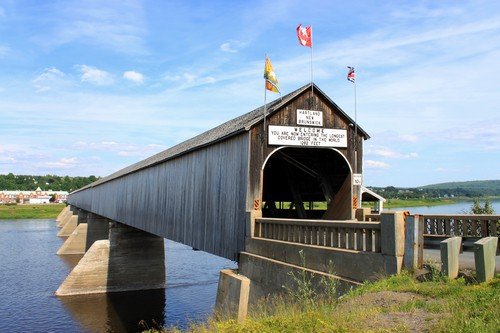
Eastern Canada Travel Guide – What Currency Is Used in Eastern Canada?
The Canadian Dollar currently exchanges at US$1 = CA$ 1.3. Visitors should have no problem handling their money throughout Eastern Canada. ATMs are widespread besides the most isolated locations and the majority of businesses will also accept card payments.
We advise visitors to look for the best value commissions/rates quite carefully as a number of large Canadian banks have international partnerships offering preferential value to those customers. No matter what you’ll find better rates at ATMs and banks compared to the change desks that proliferate around popular tourist hotspots.
Most visitors should not need to carry more than $100 in cash for small incidental purchases and should use their cards for major purchases instead.
One thing worth noting is that visitors should keep an open mind about haggling. Set prices are unlikely to change, but when it comes to arranging specifics – for instance, multiple-day car hire, tours, long term accommodation and so on – there is usually some room to negotiate a discount especially if you are a larger group.
Eastern Canada Travel Guide – Do I Tip In Eastern Canada?
There is a tipping culture in Eastern Canada and it is quite comparable to what you’d expect to find in the USA. Look to include an extra 10-20% on restaurant meals, 10% on cab rides, and a dollar or two for having bags carried and drinks served.
You should only really hold out on tips if you have encountered especially poor service. Fortunately, standards tend to be very high throughout the Canadian service industry so chances are that this will rarely apply. Remember to also leave a token tip for hotel room attendants.
Eastern Canada Travel Guide – What Kind Of Budget Do I Need In Eastern Canada?
We’ll quote our price estimates in Canadian Dollars throughout the Eastern Canada Travel Guide.
Visitors should expect to pay roughly the same amount for goods and services as they would on the other side of the border. There are some discrepancies here – fresh food can be a little pricier, and gas usually costs more too – but when it comes to accommodation and activities there is very little real difference.
How much you spend in Eastern Canada is going to depend very much on where you are and what you plan on doing. You could quite reasonably get by on a pittance assuming you’ll be spending large amounts of time out enjoying nature – but throw in a whale watching trip and your budget will be blown out the water!
Here are three very approximate estimates for what kind of budget you’ll need on a daily basis during your time in Eastern Canada. Remember that prices fluctuate according to seasons and that these ought to be considered as average/mean daily costs to account for days when you’ll spend more or less than normal.
Budget ($100/day maximum)
Truth be told if you’re out hiking you could expect that $100 to stretch for at least two or three days. Campsites are very cheap or even free, and dorm beds in hostels and lodges rarely head north of $25/night outside of the major cities. Even then, budget accommodation options are still considerably cheaper than a standard motel/hotel room that’ll cost about $80-140/night for a double room.
In some places that may be your only option so factor it into your budget and be ready to ‘bunk up’! Food can cost as little as $10/day if you are happy with basic self-catering – but expect to pay two or three times that amount if including at least one simple sit-down meal in a diner/restaurant every day.
Compared to the rest of the country Eastern Canada tends to be slightly more expensive. The proximity to major US cities makes the likes of Toronto and Niagara Falls especially popular with short-stay vacationers and you’ll notice this reflected in the higher room rates and so on.
The prices are pretty reasonable for the basics with only a handful of attractions costing more than $5. Travel costs are also fair although we’ll cover these in more detail later in the Eastern Canada Travel Guide. Overall, while Canada is hardly #1 on the list of budget-friendly destinations you can certainly have a wonderful time here without spending outrageous amounts of money on a daily basis.
Mid-Level ($150-250/day)
Decent – but not five star – hotels make up the majority of the accommodation sector and prices tend to be quite steep although you’ll still find occasional bargains. Work on the rule of thumb that outside of major cities about $100/night is reasonable for a double room and $120/night in cities represents something close to a bargain.
Prices will be noticeably higher during peak and holiday seasons especially around the border. Either way, within this budget you’ll still have a fair amount of spending money left over. Eating mostly at restaurants/cafes will set you back about $50-60/day without going crazy on the drinks menu.
Besides being able to afford to visit the most expensive attractions (up to $25/person) the key difference with this budget is that it allows for car hire and gasoline. As already noted, having your own transport makes it much easier to explore Eastern Canada in an independent manner.
If you are looking at a road trip there are not many better places on the planet – and that car is going to cost anywhere from $50-100/day including insurance. Obviously, groups will split this cost making it something close to a bargain compared to public transit options.
High-End ($250+/day)
Top hotels can hit stratospheric prices – and we’re including the best ski lodges within that estimate. Truth be told, a very good four-star hotel will comfortably hit $200/night for a double room – and that is before you include any extras such as spa services and airport transfers.
You ought to allow for at least $70-80 per person when dining out at the best (but not exclusive) restaurants and again that’s before the wine menu comes into play. High-end options in Toronto and around the Falls tend to cost an extra 20% on top of what you’d pay for similar quality elsewhere in the region.
The lowest end of this budget ought to be roughly around what visitors should expect to pay if visiting during the ski season. Lift passes can be as low as $50/day (or even less when purchased for multiple days) but accommodation and equipment hire are going to push that budget well towards the boundary figure.
Compared to the rest of Canada you’ll still be able to enjoy some good value at reasonable prices in Eastern provinces but it is worth being aware that costs can be just a little higher. We at the Eastern Canada Travel Guide would suggest that somewhere around the $150-200/day mark is more than adequate – and it can certainly be done for much less.
Eastern Canada Travel Guide – What Languages Are Spoken in Eastern Canada?
English and French are both official languages in Canada but you’ll only really notice people speaking French as a ‘first language’ in Quebec. Not too long ago visitors to Quebec almost always returned home with stories about how they had been verbally assaulted by attempting to speak English in this province – but nowadays that attitude has significantly softened!
Even though only a third of people in Quebec City speak both French and English most people will understand the basics and be accommodating in a most Canadian manner.
Eastern Canada Travel Guide – What Religions Are Practiced in Eastern Canada?
Around 65% of all Canadians consider themselves to be Christian (with about a two-thirds Roman Catholic majority). The rest do not identify/practice any religion or follow minority religions that tend to be located almost entirely in urban areas. Eastern Canada – perhaps because of Quebec’s unique heritage – is considered slightly ‘more religiously inclined’ than other parts of the country but this is still not going to affect anyone’s visit providing they are respectful around religious sites.
Canada endorses and protects freedom of religion so you’ll have no problems following your own where applicable.
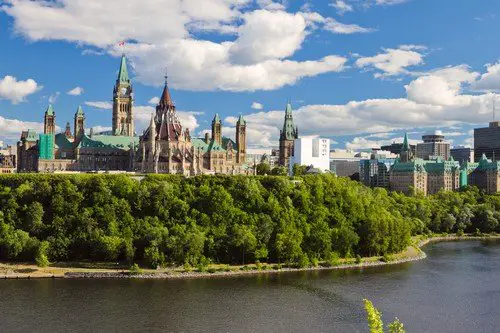
Eastern Canada Travel Guide – Practical Tips From The Eastern Canada Travel Guide
At this stage of the Eastern Canada Travel Guide, we’ll take a closer look at the practicalities of making the most of this spectacularly varied part of the country. It is easy to get blown away by the natural splendor of Eastern Canada. From the jagged coastlines through to luscious Quebec and those endearingly tranquil lakesides, this part of the world is especially soft on the eye.
Throw in a thriving economy, a permissive and inclusive society, and some of the world’s highest standards of living and it is easy to see why many people dream of moving here. From a visitor’s perspective, there are fewer easier and more accessible places to tour about while still often being able to feel the rawer side of nature.
As discussed previously it is important to try and spend some serious thinking time weighing up your options before visiting Eastern Canada. While it is certainly true to say that no matter which direction you take you’ll find something amazing, it is just as easy to accidentally miss out on some magnificent opportunities when rolling down the highways.
If time allows, do try your best to deviate a little off the beaten track. Lesser visited areas in Nova Scotia, for instance, have some unique attractions that relatively few people make the diversion out to explore. Get your planning and research done properly and you’ll enjoy day after day of wonderful experiences in this part of this great country – so try not to spend too many hours each day on the highway.
Eastern Canada Travel Guide – What About Health and Safety in Eastern Canada, Is It Safe?
Many visitors still find it amazing that peaceful, safe, and largely hassle-free considering Canada shares a border with the USA. Those differences are not quite as pronounced as they once were and visitors should still take the same precautions in big-city Toronto as they would in Chicago or New York City – but most people will not encounter much exposure to crime providing they avoid the seamier districts.
Marijuana is legal for recreational use but there are strict rules according to where and it can be purchased and consumed. Street dealers still peddle black market (untaxed) marijuana alongside other highly illegal substances. We’d suggest avoiding these as the penalties if you are caught are just as bad as the chances of getting mugged/robbed.
Canadian health services are justifiably regarded as some of the best in the world. The drawback is that they are extremely expensive so you must make sure you have comprehensive insurance before visiting. Make sure your policy includes any riskier activities you are undertaking in Eastern Canada such as sailing, climbing, skiing, and so on. Repatriation cover is also a sensible inclusion.
Pharmacies are extremely well stocked and usually have close to the same brands as you’ll find in the USA. There are quite strict rules regarding what medications you can take into the country and which need to be declared, so read up on these if applicable and be sure to take an adequate supply (90-day maximum). Should you lose your prescription you’ll most likely need to visit a Canadian doctor and pay from your own pocket. Take copies of essential documentation to help speed along the process.
The majority of people who become sick/injured while visiting Canada fall victim to the sometimes unforgiving climate. Keep an eye out for heat and cold-related illnesses and know how to spot symptoms and what immediate actions are to be taken. Mosquitos and ticks can be problematic in Eastern Canada during warmer months so check for these routinely.
Tap water is almost always safe to drink but may not taste especially great. Stick to bottled if you have any doubts.
Eastern Canada Travel Guide – What is the Best Transportation in Eastern Canada?
As you may have guessed already having access to your own vehicle really does help unlock Eastern Canada. Even if you are only planning on visiting the major destinations you should be aware that the otherwise quite extensive rail network does not expand as far east as Newfoundland or Prince Edward Island.
Car hire is relatively straightforward and inexpensive when the costs are shared, roads are generally very high quality and other drivers are pretty benevolent. You will need to be over 25 and have a valid credit card.
Alternatives to hiring/bringing/purchasing your own vehicle are actually pretty good options in their own right. The Greyhound network is not as great as it used to be but still operates pretty extensively throughout Eastern Canada. Tickets are reasonable and buses are timely and in good condition.
If you opt for long-distance buses just be aware that many love to crank up their airconditioning very high regardless of the season – so pack a jumper in your day bag. Hitchhiking is sadly not as common as it once was in Canada and is actually prohibited along some major roads for safety reasons.
If you have the time and are looking to thoroughly explore the luscious East Canada countryside then cycling is a wonderful way of getting about. Bikes are cheap to hire and can usually be purchased at just as reasonable rates – just remember to pick up a puncture repair kit and know how to use one!
Biking is rapidly becoming more popular throughout Eastern Canada and most of the large cities now have dedicated cycle paths/lanes. Ferries are also a great way of exploring the coastline and some parts of the interior. Look out for those that offer longer/scenic routes during the tourist season – they’re usually worth the price.
Should you be planning on traveling further in the country or internationally then we’d suggest looking towards the extensive and often surprisingly good value internal airline network. It isn’t the most environmentally sound choice out there, but the distances involved make it a no-brainer. Research your prices carefully as they can change between websites. Sometimes the best option is to adopt the old fashioned approach of calling up an airline and haggling!
Eastern Canada Travel Guide – What Are the Best Accommodations in Eastern Canada?
From motel to forest lodge and everything in-between – there is no shortage of options when it comes to finding somewhere good to stay! Budget visitors to Eastern Canada are going to have few alternatives to hostels (which become patchy outside the big cities/destinations), camping, cheap/discount B&Bs, and bunking up in shared rooms.
Visitors who have more cash to spend will have no problems choosing between universally decent quality hotels/motels and so on. Just anticipate paying considerably more compared to what you’d be spending on a hostel – but such are the perks of having an ensuite bathroom! Upscale hotels are dotted throughout Eastern Canada and prices can become very significant indeed.
Anyone used to the USA accommodation market will notice plenty of similarities with that in Canada. Perhaps the biggest difference is that prices tend to be more ‘standardized’ and room quality is often that little bit better.
You’ll get what you pay for most of the time just be aware that prices in more remote places can frequently be higher than more populated parts due to a lack of alternatives. You could quite easily research private accommodation through the likes of Airbnb in Canada – the network is extensive and well-reviewed.
Eastern Canada Travel Guide – How Can I Practice Responsible Tourism in Eastern Canada?
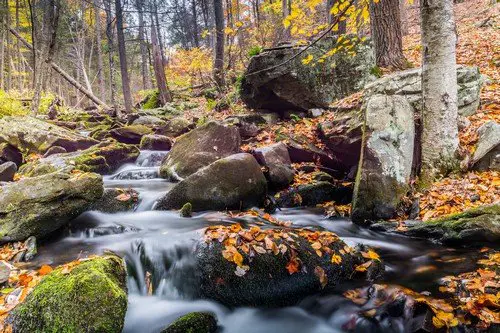
Canadians take quite considerable and understandable pride in the natural splendor of their enormous country – and managing commercial exploitation of natural resources vis a vis protecting this is currently a significant topic. Although Eastern Canada is at less risk of unsustainable exploitation (most of these issues are in the west and far north) it is worthwhile understanding these to help appreciate the Canadian mindset.
You may also take some alarm at how widespread and popular hunting is in the more rural parts. Whatever your opinion be assured that these activities are quite carefully monitored (and usually respected). It is unlikely that anyone will ask you to join in – but if you are concerned about illegal hunting/fishing then you should look to report it.
Look after the scenery as you pass through it and take care to follow all signposted rules when hiking and camping. Wildfires are a growing issue throughout the country and the last thing you want to do is accidentally perpetuate the issue.
Eastern Canada Travel Guide – What Food Should I Try In Eastern Canada?
Besides the ubiquitous maple syrup and poutine, you’ll find plenty of other provincial treats to try throughout Eastern Canada. As you may have expected, Quebequois food is perhaps the most distinctive compared to the rest of the region/country. This focuses heavily on warming stews and cuts of meat served alongside French-influenced sauces. Tourtières meat pies are delicious – if calorific – on the go meals that’ll keep you going all day.
Pea soup may not sound especially thrilling but the thick and flavorful Quebec style makes this an ever-present on many local menus. You’ll find a huge amount of variety in the big cities – we’d recommend making the most of the Vietnamese restaurants and street food stalls in Toronto for something a little more exotic!
Visitors following restricted diets will not have any problems getting by in Eastern Canada. Vegetarian produce and dishes are clearly labeled as such, and the veganism trend has properly taken hold in this part of the country. You may find yourself limited for choices out in the remote parts of the region but overall you’ll have no problems getting by.
Eastern Canada Travel Guide – What Should I Pack for A Trip to Eastern Canada?
Prices for outdoor clothing and equipment are similar to those in the USA – meaning you’ll be paying for high-quality options. Try and take good quality waterproofs and gear with you if you’ll be needing to use it during your trip. A decent pair of well broken-in boots that are properly waterproofed is also a must for exploring the outdoors.
Remember to also pack handy little extras such as battery packs, lightweight torches, power converters and perhaps a basic first aid kit if you are heading off the beaten path.
You’ll be able to purchase anything else you need throughout your time in Eastern Canada.
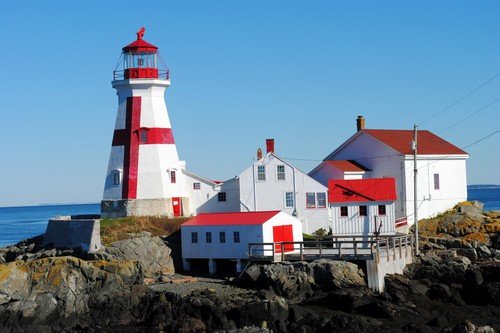
Eastern Canada Travel Guide – What Clothes Should You Wear In Eastern Canada?
You can wear pretty much whatever you like in the major cities – just remember that classier nightspots and restaurants usually operate some kind of dress code. While out exploring the country in-depth, sensible and hard-wearing clothing is probably your best option.
Remember that ticks can be an issue during the summer months so try to wear clothes that lightly cover your skin while allowing room for air to circulate. A hat is a good idea for both added insulation and to keep the sun off depending upon the time of year.
What Are Some Interesting & Important Facts about Eastern Eastern Canada?
We hope you have enjoyed reading the Eastern Canada Travel Guide and will finish up with a few fun little facts about this glorious part of the country. Whether your planning on an extensive road trip, casual city break, whale watching along the Atlantic coastline, or anything and everything in-between you’re sure to have a wonderful time here.
Not many countries can boast such a massive expanse of glorious nature to explore in relative ease – just be sure to keep an eye on the map and account for the sometimes considerable distances involved! This part of Canada certainly loves to embrace visitors so do your best to chat with the locals and remember to always compliment the quality of that maple syrup!
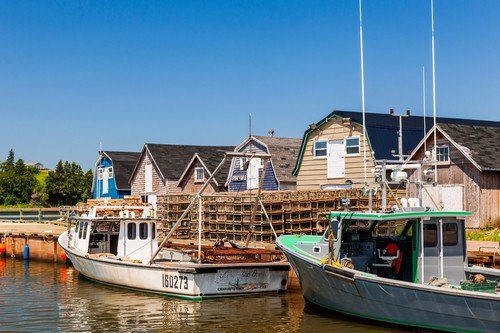
Here are some of the Eastern Canada Travel Guides favorite facts:
▸ Point Pleasant – Halifax’s most popular park – is still leased from the British for 10 cents per year. They have a 999-year lease.
▸ St John’s in Newfoundland is the oldest city in North America. The first house was laid in 1528.
▸ Toronto is the fifth-largest city in North America and home to over 8,000 restaurants.
▸ The city’s highest recorded temperature is 41°C – and the lowest is -31.3°C.
▸ New Brunswick has the highest variety of whales anywhere on the planet.
▸ Montreal recorded the world’s first-ever indoor hockey game back in 1875.
▸ It also has over 20 miles of underground tunnels – some of which are open to the public.
▸ The Chateau Frontenac is (understandably) the world’s most photographed hotel.
▸ Ontario is larger than Spain and France combined.
▸ Montgomery Falls is 30 meters higher than those at Niagara.
We hope you enjoyed reading the Budget Eastern Canada Travel Guide – and good travels! Contact us with any questions you may have about travel to Eastern Canada.

